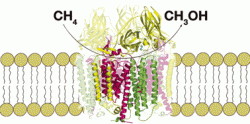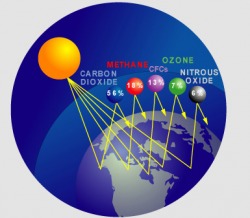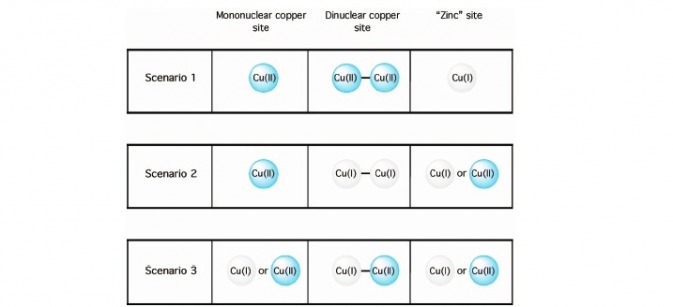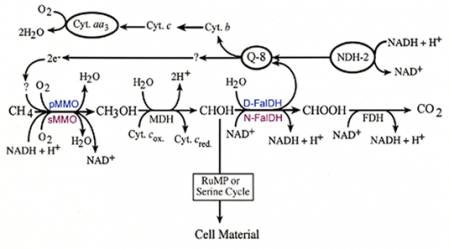pMMO: particulate methane monooxygenase

The figure to the left (Dalton Trans., 2005, 3390 - 3396) shows what pMMO does, that is converts methane to methanol, but this is not the only reason why this enzyme is so interesting. There have been considerable research efforts over the past 20 years to try and characterize the overall metal content and active site. This site will explore the mechanism, structure, spectroscopic data and the problems and contradictions that come with each.
The conversion of a natural gas, methane, to useful fuels presents a major advantage allowing for natural gas reserves to become an alternative to petroleum. This direct conversion presents a major challenge chemically because methane is the most inert hydrocarbon (104 kcal/mol C-H bond) and methanol reacts further at higher temperatures. These facts make pMMO even more interesting because in nature pMMO enzymes catalyze the conversion of methane to methanol at ambient temperature. Methanotrophic bacteria oxidize methane to methanol in the first step of their metabolic pathway and can use methane as their only energy and carbon source. The enzyme methane monooxygenase exists in 2 forms; the well studied soluble iron containing form (sMMO) and a membrane bound particulate form (pMMO). We will be looking at the membrane bound particulate form in which the catalytic center remains controversial in terms of overall metal content. Shown below are proposed metal oxidation states of the copper centers. (Acc. Chem. Res. 2007, 40, 573–580)

Studying methane oxidation in methanotrophs is important for a couple reasons. The first is these organisms make a biological sink for methane, a green house gas. This is important because of the increasing concentration in the atmosphere. It is also important to understand pMMO so we can relate the information to related enzymes such as amonia monooxygenase. (Biophysical Journal, Vol, 79 August 2000, 1085-1094) Particulate methane monooxygenase oxidizes methane by the pathway to the left. The more detailed description of the pathway can be found below
Why Study pMMO?

An organism that converts methane to methanol at ambient temperatures presents some major advantages, this makes understanding the metal composition and oxidation states significant in understanding how this process occurs. Currently a hot topic all over the world is CO2 emissions and greenhouse gases. Methane is a greenhouse gas so understanding the mechanism in which methanotrophs convert methane to methanol could reveal not only interesting, but relevant, chemistry.
Authors and Contact Information
This site was created by:
Andrew Ehle (arehle(at)udel.edu)
Cay Williamson (ctress(at)udel.edu)
Daniel MacDonald (uri(at)udel.edu)
Andrew Ehle (arehle(at)udel.edu)
Cay Williamson (ctress(at)udel.edu)
Daniel MacDonald (uri(at)udel.edu)
Citations
1. Biophysical Journal, Vol, 79 August 2000, 1085-1094
2. Acc. Chem. Res. 2007, 40, 573–580
3. Dalton Trans., 2005, 3390 - 3396
2. Acc. Chem. Res. 2007, 40, 573–580
3. Dalton Trans., 2005, 3390 - 3396


